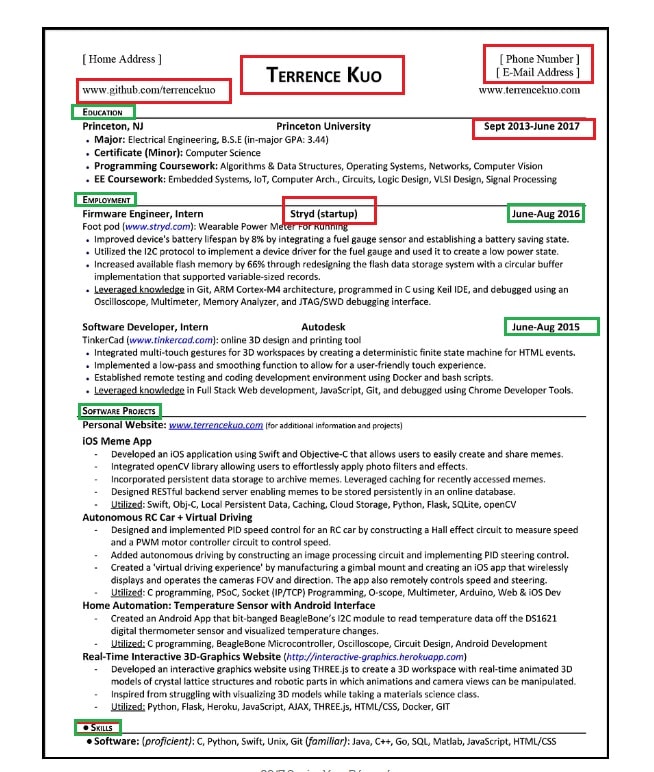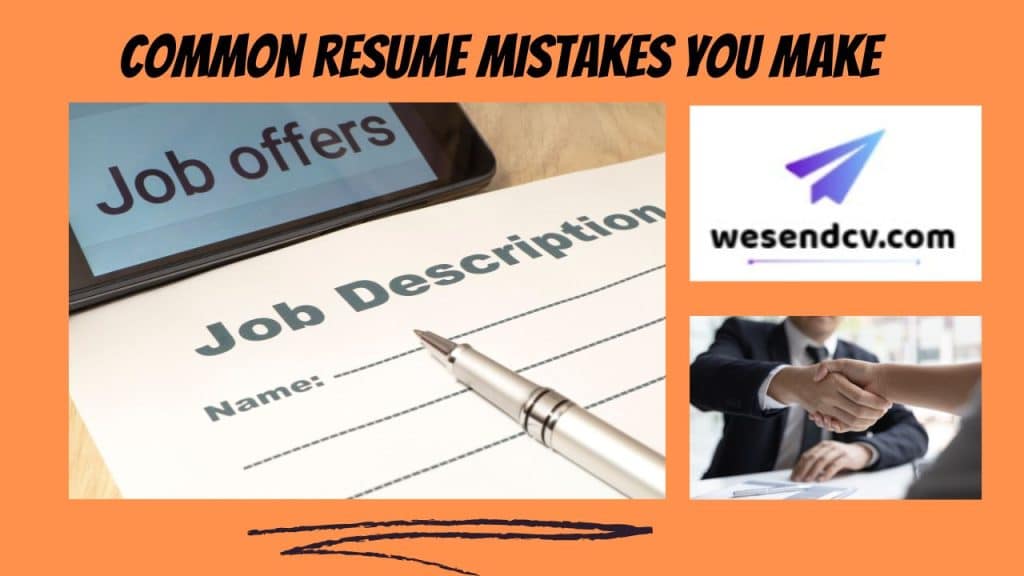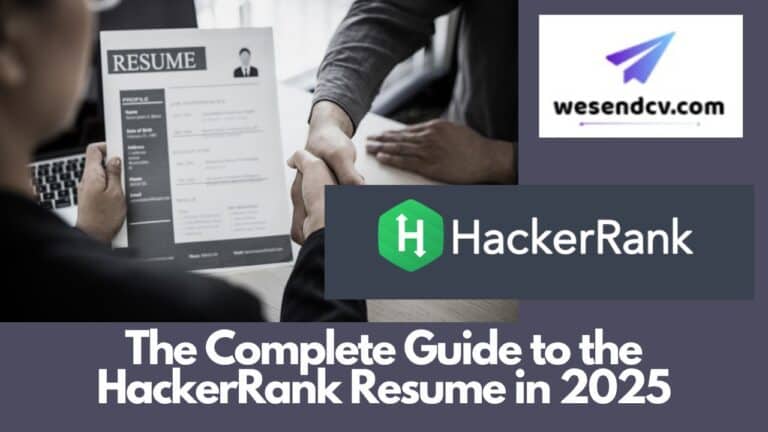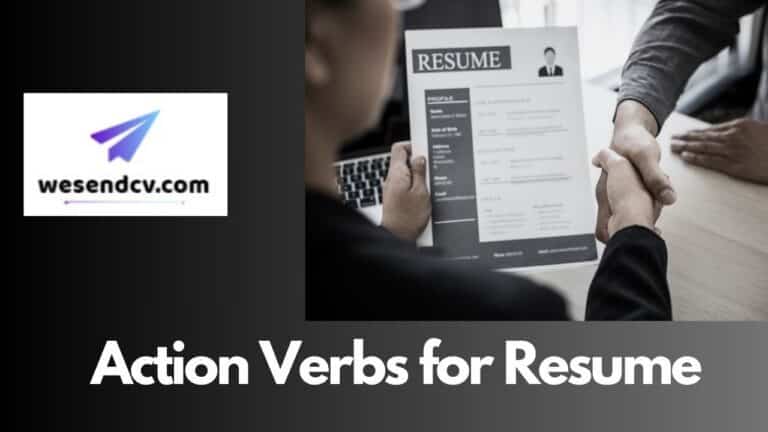Main Highlights of Content
Toggle1. Lack of Tailoring to the Job Description
Employers often seek candidates who fit their specific needs, yet many job seekers miss this crucial detail. Submitting a generic resume can significantly reduce the chance of securing an interview. Each job has unique requirements; therefore, resumes should be tailored to match these specifications closely.
When applicants highlight experiences, skills, and accomplishments directly relevant to the job description, they demonstrate their understanding of the role. This approach captures the hiring managers’ attention and showcases the candidate’s genuine interest in the position.
Hiring managers can quickly identify resumes that lack personalization. Generic resumes might suggest a lack of effort or commitment. Customizing each section to relate to the job posting can improve one’s prospects.
Applicants must study the job description carefully and align their CV content accordingly. Addressing keywords and phrases used in the job listing can help in making a resume stand out. By tailoring resumes specifically for each application, candidates exhibit greater professionalism and increase their chances of success.
Avoiding Generic Resumes
Submitting a generic CV can be detrimental to job prospects. Employers look for resumes that speak directly to their needs. Generic submissions often get overlooked, as they fail to demonstrate the candidate’s fit for the position.
Candidates should customize their resumes for each application. Tailoring content to highlight specific skills and experiences relevant to the job description makes a significant impact. This approach shows that the applicant has done their homework and is serious about the opportunity.
Job seekers should also use keywords from the job posting. Incorporating these terms can help resumes pass through Applicant Tracking Systems (ATS) and reach hiring managers.
It’s essential to personalize each CV by addressing the core requirements of the role. Instead of providing a broad overview, focusing on how past experiences align with the job can make a resume stand out. Conveying a clear alignment with the employer’s needs increases the chances of securing an interview.
By avoiding generic resumes, candidates present themselves as more tailored, committed, and professional.
Highlighting Relevant Skills and Experience
Skills and experience relevant to the job description should be prominently showcased. Candidates must focus on illustrating how their background aligns with the position’s requirements. Drawing attention to specific examples from past roles can demonstrate suitability for the job.
Emphasizing industry-specific expertise solidifies the candidate’s proficiency. For instance, a marketer applying for a digital marketing role should highlight experience in SEO, content creation, and analytics tools. This indicates not only familiarity but also capability.
Transferable skills are equally important. These include leadership, communication, problem-solving, and teamwork abilities. They show adaptability and readiness to contribute value across various settings.
Highlighting soft skills along with technical ones ensures a balanced presentation. This gives employers a comprehensive view of the candidate’s qualifications. Including achievements that show the application of these skills in previous roles adds credibility.
It is crucial to relate each skill and experience directly back to the potential role. Relevance is the key to capturing attention. This approach makes the resume more engaging and increases the chance of progressing to an interview.

2. Grammatical and Spelling Errors
Grammatical and spelling errors can significantly undermine a candidate’s professionalism. Such mistakes convey a lack of attention to detail and can create a negative first impression. Employers may perceive these errors as a sign of carelessness or insufficient effort in preparing the CV. A polished, error-free document demonstrates respect for the hiring process and the applicant’s commitment to quality.
Proper proofreading is essential. It’s advisable to review the CV multiple times to catch any oversights. Reading the document aloud can help identify awkward phrasing and inadvertent errors that may be missed in silent readings. Spell-check tools offer additional support in identifying common mistakes, although they are not foolproof.
Engaging a second set of eyes can be invaluable. Having a trusted friend, mentor, or professional reviewer examine the resume often uncovers hidden issues. A meticulous approach ensures the resume is both grammatically correct and free of spelling mistakes, thereby enhancing its overall effectiveness. Such diligence reflects well on the candidate’s professional standards and bolsters their suitability for the position.
Proofreading for Mistakes
Attention to detail is crucial in resume writing. Errors in grammar and spelling can create a negative impression of the candidate’s professionalism. It is important to thoroughly review the document multiple times to catch any oversights. Reading aloud can be particularly effective in identifying awkward phrases and hard-to-spot mistakes.
Using online spell-check tools adds an extra layer of security. However, one should not rely solely on these resources, as they can miss context-based errors. Combining automated tools with manual reviews ensures a higher level of accuracy.
A second opinion is often invaluable. Having a trusted friend, mentor, or professional reviewer examine the CV can uncover hidden errors and offer constructive feedback. This collaborative approach not only helps to identify mistakes but also improves the overall quality of the document.
This diligence reflects well on the applicant’s attentiveness and dedication to producing a top-notch resume. By investing time in thorough proofreading, candidates significantly enhance their chances of making a positive first impression.
Using Spell Check Tools Effectively
Spell-check tools play a crucial role in maintaining accuracy. They help catch basic spelling errors and grammatical mistakes, enhancing the resume’s readability. Utilizing these tools can save time and improve the document’s overall quality.
It’s important to select a reliable spell-check tool. There are various online options, some of which offer more advanced grammar and style suggestions. A good practice is to use multiple tools to cross-verify the document’s correctness. This approach mitigates the risk of missing errors that one tool might overlook.
However, these tools are not infallible. They may miss context-specific errors or suggest inappropriate corrections. Human oversight remains essential. After running a spell check, reviewing the suggestions critically ensures that accurate and contextually appropriate changes are made.
Additionally, one should be aware of language settings. Ensure the spell check tool is set to the appropriate version of English, such as American or British, depending on the job’s location. This small detail can greatly impact the resume’s perceived professionalism and attention to detail.

3. Including Irrelevant Information
Including unnecessary details can clutter a resume and dilute its impact. It’s essential to focus on job-relevant information to maintain the employer’s interest. Personal hobbies, unrelated jobs, or overly detailed descriptions of early career roles can be distracting. Employers prefer concise resumes that clearly highlight qualifications pertinent to the job.
An effective resume streamlines content to include only what supports the candidate’s application. Details such as outdated skills or jobs from decades ago may not add value. Instead, showcasing recent and relevant experiences demonstrates up-to-date knowledge and capabilities.
Excessive length is another common mistake. A lengthy resume can overwhelm recruiters and obscure key information. Keeping the resume to one or two pages ensures that the most important aspects stand out. Each section should serve a clear purpose, emphasizing qualifications and achievements that directly relate to the job posting.
In summary, a focused and targeted resume is more compelling. By avoiding irrelevant information, candidates present a clear, professional, and concise picture of their suitability for the position.
Focusing on Job-Relevant Details
Candidates should ensure their resumes highlight details pertinent to the job they’re applying for. Irrelevant information can distract hiring managers and obscure essential qualifications. Instead, focus on showcasing relevant skills and experiences that align with the job description.
Ensure each section of the resume underlines professional capabilities directly connected to the role. Tailor descriptions to emphasize how past experiences have prepared the candidate for this specific position. Mention key projects, responsibilities, and achievements that demonstrate suitability for the job.
Highlight certifications, training, or education directly related to the industry. This approach strengthens the application by showing commitment and expertise. Avoid including outdated skills or jobs that do not add any value to the current role being pursued.
By concentrating on pertinent details, candidates present a more compelling case for their employment. This strategy ensures the resume is concise, focused, and relevant, increasing the chances of capturing the employer’s attention and making a strong impression.
Trimming Unnecessary Content
One critical aspect of crafting an effective resume is conciseness. Candidates often make the mistake of including too much unnecessary information. However, a streamlined resume not only looks more professional but also captures the recruiter’s attention more effectively.
Candidates should aim to remove content that doesn’t directly relate to the job they’re applying for. Early career roles, irrelevant hobbies, or outdated skills can often be omitted. This approach ensures that the CV remains focused and relevant.
Including too many details can overwhelm hiring managers. It’s important to prioritize quality over quantity. Highlighting recent, job-specific experiences demonstrates a clear alignment with the role.
The use of active language and bullet points can also help in making descriptions more succinct. This method ensures that key responsibilities and achievements are easy to read.
Ultimately, a refined CV shows attention to detail and respect for the employer’s time. By concentrating on pertinent information, candidates can present a more compelling case for their employment. This strategic trimming can significantly improve the overall impact of the resume.

4. Omitting Key Achievements
One major error candidates make is leaving out their significant accomplishments. Achievements demonstrate a candidate’s impact in previous roles. They provide concrete evidence of skills and competencies. Employers look for tangible results that set a candidate apart.
Candidates often fall into the trap of listing job duties rather than achievements. This approach misses an opportunity to showcase value added to prior positions. Including metrics and specific examples can dramatically strengthen a resume.
For instance, instead of simply stating “managed a team,” one should highlight the outcomes, such as “led a team of 10, increasing productivity by 20%.” Such details offer a clear picture of capabilities.
Neglecting to include key achievements can lead to an underwhelming CV. Prospective employers may not grasp the full extent of a candidate’s abilities. Emphasizing accomplishments ensures that strengths are highlighted effectively.
Ultimately, clearly defined achievements create a compelling narrative. They illustrate past successes and promise future contributions. This focus can be decisive in securing interviews and job offers.
Showcasing Accomplishments and Results
Employers are drawn to concrete evidence of past successes. Candidates should highlight specific accomplishments in their resumes. Vague job descriptions lack appeal and impact. Clear results show a candidate’s effectiveness in previous roles. Measurable achievements provide valuable insights into capabilities.
Using numbers strengthens the resume’s credibility. Including percentages, sales figures, or project deadlines illustrates real-world impact. This method helps employers gauge the potential contributions of the candidate.
Consider using concise bullet points to list achievements. Bullet points draw attention and enhance readability. Each point should focus on a compelling result or outcome. Highlighting awards, recognitions, and completed certifications also adds merit.
Maintaining relevance is crucial while showcasing accomplishments. Only include achievements that align with the job applied for. This tailored approach ensures that the resume resonates with hiring managers.
Employers are more likely to respond to candidates demonstrating significant results. By emphasizing accomplishments, applicants stand out and make a lasting impression. In turn, this increases the likelihood of securing interviews and job offers.
Quantifying Impact with Numbers
A resume becomes powerful when accomplishments are backed by numbers. Instead of saying, “led a successful team,” it’s more effective to write, “led a team of 10, resulting in a 25% increase in quarterly sales.” Numbers provide context and scale, making achievements clear and impactful.
Employers appreciate concrete data that showcases a candidate’s contributions. For example, mentioning, “improved customer satisfaction scores by 15%” or “reduced costs by $50,000 annually” highlights real success. This approach validates the candidate’s claims and paints a vivid picture of their potential.
Breaking down tasks into quantifiable elements can also help. Rather than stating, “managed projects,” a CV should say, “managed 5 concurrent projects with budgets totalling $1 million.” Numbers demonstrate efficiency and capability, essential traits for any role.
Ensuring these numerical details align with the job’s requirements bolsters the resume’s appeal. Candidates who quantify their achievements effectively communicate their value, helping them stand out from the competition and attract the attention of hiring managers.

5. Neglecting Formatting and Design
A resume’s appearance plays a crucial role in making a positive impression. A cluttered layout can deter hiring managers from delving into the content. Therefore, choosing a clear and professional design is essential. Keep margins consistent and whitespace ample to enhance readability.
Consistency in font, style, and alignment creates a polished look. Using one or two fonts is advisable. Overloading the document with various styles can make it seem chaotic. Proper use of bold, italics, and bullet points ensures key information stands out without overwhelming the reader.
Formatting should be neat and systematically arranged. Headers and subheaders should be clear and uniform. Sections like work experience and education should follow a logical order. Moreover, avoid excessive graphics or colours; simplicity often delivers clarity.
A poorly designed resume might suggest a lack of attention to detail. On the contrary, a well-structured resume speaks volumes about a candidate’s professionalism. Adhering to these principles can significantly improve the chances of securing an interview. Proper formatting and design are non-negotiable aspects of a compelling resume.
Choosing a Clear and Professional Layout
A clear and professional CV layout is essential for making a positive first impression. The layout should be clean and well-organized, with ample margins and spacing. Consistent use of headers and subheaders guides the reader through different sections effortlessly. Each section should be precisely delineated, whether it’s education, work experience, or skills.
Font selection is crucial; simple and legible fonts such as Arial or Times New Roman are recommended. Using one or two fonts ensures coherence without causing visual clutter. Bold headings and bullet points can highlight key sections and accomplishments, but excessive bolding can be distracting.
A balanced use of whitespace improves readability and prevents the resume from appearing too dense. Overly complex designs or graphics should be avoided as they can detract from the content’s clarity. A well-structured resume not only conveys professionalism but also attention to detail.
Employers often scan resumes. Therefore, the layout must prioritize clarity and ease of navigation. This strategic presentation significantly boosts a candidate’s chances of progressing to the interview stage.
Consistency in Font, Style, and Alignment
Maintaining consistency in font, style, and alignment is crucial for a professional CV. Uniformity enhances readability and reflects attention to detail. A resume should ideally use a standard font, like Arial or Times New Roman, throughout the document. Switching fonts can make the content look disjointed and unorganized.
Using consistent styles for headings and subheadings creates a visually coherent structure. For instance, all main headings can be bold and slightly larger than subheadings. This allows recruiters to easily navigate through different sections.
Alignment plays a vital role in the presentation. Whether opting for left, right, or justified alignment, one should remain consistent to avoid a cluttered appearance. Proper alignment ensures that the resume looks neat and professional.
Margins should also be uniform throughout the document, typically around one inch on all sides. This keeps the text evenly spaced and prevents cramped content.
Consistent formatting conveys a sense of professionalism and meticulousness. It reassures employers that the candidate is organized and detail-oriented – essential qualities for any position.
6. Failing to Customize the Resume for Each Application
Submitting the same resume for every job application is a common yet detrimental mistake. Employers can easily spot a generic resume that lacks tailoring to their specific requirements. Each job posting is unique and demands a unique approach to match its criteria.
Personalizing a resume for each application demonstrates genuine interest in the position. Recruiters look for candidates who have taken the time to align their skills, experiences, and achievements with the job description. This tailored approach increases the chances of catching the hiring manager’s attention.
To ensure relevance, applicants should highlight relevant skills and accomplishments prominently. Using industry-specific keywords from the job posting can also enhance compatibility. Each section of the resume should resonate with the specific role, showcasing how the candidate fits seamlessly into the company.
Customizing resumes for each application might take extra time, but it’s a worthy investment. It shows diligence and understanding of the company’s needs, differentiating serious contenders from the crowd. This effort significantly improves job search success rates, making it indispensable.
Personalizing Content for Specific Roles
Tailoring a resume for each job application is essential for standing out in a competitive job market. Candidates should carefully analyze the job description to identify the key skills and experiences the employer is seeking. They must then adjust their CV to reflect these attributes prominently.
Employers appreciate when candidates demonstrate a clear understanding of the role. By personalizing content, applicants can highlight their most relevant experiences and achievements. This approach shows that they have invested time to understand what the company needs.
Using specific keywords from the job posting ensures that the resume passes through applicant tracking systems (ATS). This practice increases the chances of getting noticed by recruiters. It’s important to align past job roles and responsibilities with the duties of the target position.
Also, mentioning projects and accomplishments that directly relate to the new job can effectively showcase one’s qualifications. This level of customization signals commitment and interest in the role, potentially leading to a successful application outcome.
Adapting each resume to the job applied for is more than just an option—it’s a strategic necessity.
Emphasizing Fit with Company Culture
Job seekers should demonstrate an understanding of the company’s values and culture. Doing so can significantly enhance their appeal to employers. When writing a resume, candidates should research the company’s mission and values thoroughly. This allows them to tailor their CV to mirror these elements.
Incorporating language and terminology used on the company’s website or in their job postings can create an immediate connection. Highlighting experiences that align with the company’s culture shows dedication and a proactive approach. For example, if a company values teamwork, candidates should emphasize collaborative projects they have completed.
Mentioning involvement in relevant activities outside of work can also be beneficial. Volunteering, participation in professional groups, or personal projects that reflect the company’s ethos can distinguish a candidate from others.
Employers appreciate applicants who take the time to display a genuine interest in fitting into their corporate environment. Therefore, it’s advantageous for candidates to strategically infuse their resumes with evidence of cultural compatibility. This approach not only enriches the CV but also significantly boosts the chances of making a favourable impression.
Conclusion
When it comes to securing a job, avoiding resume or CV mistakes is crucial. Mistakes on your resume can create a negative first impression, which might lead employers to question your attention to detail and professionalism. A clean, error-free resume showcases your competence and diligence, increasing your chances of landing an interview. Typos, poor formatting, and inaccurate information can derail your application process, leaving you stuck in the job hunt longer than necessary. For these reasons, it’s essential to invest time in thoroughly reviewing and perfecting your resume.







